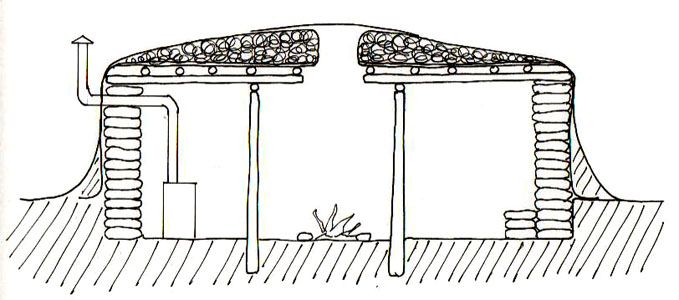[Note: This design was originally published shortly after the Pakistani earthquake in October, 2005. Even though the information is a little dated now, it gives you a sense of the urgency Kelly and I felt at the time.]
The death toll mounts as winter closes in on the survivors of the recent earthquake in Pakistan. Emergency shelter is essential for the survival of up to 3 million — and time is of the utmost importance.
The Geiger Research Institute of Sustainable Building, along with Kelly Hart of GreenHomeBuilding.com, is finalizing an emergency shelter design that could save many thousands of lives and alleviate considerable suffering.
The challenge is to provide quick, safe, decent shelter with minimal tools and supplies to sustain life through the winter. Access to remote areas is extremely difficult, since many roads have been destroyed or blocked by landslides. Because of these and other difficulties, and the fact that winter will soon create a much more dire situation, fast easy-to-build temporary shelter (that can be upgraded to permanent housing later) seems most appropriate.
The proposed design incorporates a round earthbag structure partially inset into the ground. Rice bags or sandbags are filled with soil from the building site and tamped in place to create the walls. The roof is built with poles salvaged from destroyed buildings, covered with straw, grass, leaves or whatever is available, covered with plastic sheeting or tarps, and bermed with earth to hold in place. The size can be adapted to meet site-specific needs.
A typical shelter could be built in 90 hours, not including plastering. For example, this structure could be constructed by 5 unskilled workers working 6 hours a day for 3 days.
Free plans and specifications are posted at:
Emergency Shelter Plans for Pakistan
Earthbag Dome Building (another option for earthquake zones)

